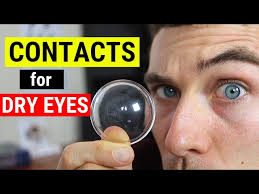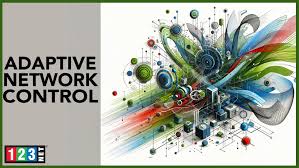This Contact Lens Can Actually Treat Dry Eye Syndrome

Best Contacts for Dry Eyes Wearing traditional contact lenses can be a convenient way to correct vision—unless you suffer from dry eye. Symptoms like red, itchy eyes, or the sensation of something in your eye often worsen with regular contact lenses. However, there is an alternative that not only offers comfort but also improves vision and reduces dry eye symptoms: scleral lenses. These large, custom-fit lenses provide multiple benefits for people with dry eyes and other eye conditions. If you experience dry eye symptoms, consult Dr. Ross Cusic to determine whether scleral lenses are the best option for your condition. We can help you find the most suitable contact lenses for dry eyes. Dry Eye Symptoms If you've been experiencing any of the following symptoms, you might have dry eye syndrome: Red eyes Itchy eyes Sensitivity to light Mucus in or around your eyes A feeling of dust or sand in your eyes Difficulty wearing contact lenses Watery eyes Blurred vision or eye fatigue Causes of Dry Eye Symptoms Your eyes are normally covered with a thin film of tears that keep them lubricated and protected. When this lubrication is inadequate—due to an imbalance in the quality or quantity of tears—dry eye symptoms can occur. Several factors can cause dry eye, including: Certain medical conditions Medications Environmental influences Hormonal changes Prolonged exposure to blue light from digital devices Long-term contact lens usage Dry eye is particularly common in women, especially during menopause. What Are Scleral Lenses? Scleral lenses are gas permeable contact lenses that are significantly larger than traditional lenses. They rest on the sclera (the white part of the eye) without touching the cornea. This design makes them ideal for individuals with dry eyes, as the lenses vault over the sensitive cornea, preventing friction and discomfort. Originally developed for patients with high astigmatism, keratoconus, and other corneal irregularities, scleral lenses have been shown to improve and even treat dry eye syndrome through numerous studies. How Do Scleral Lenses Treat Dry Eye? Unlike standard soft contact lenses, which absorb moisture from the eye, scleral lenses provide moisture. When inserting a scleral lens, you first apply a saline solution to fill the gap between the cornea and the lens, offering hydration and promoting healing. By ensuring consistent eye hydration and protecting the cornea from external irritants, scleral lenses create optimal conditions for healing dry eye syndrome. Wearing Scleral Lenses with Dry Eye Most people find scleral lenses very comfortable. They stay in place and prevent dust particles from getting underneath. However, inserting and removing these larger lenses requires some practice and extra caution. One minor drawback is the potential accumulation of mucus under the lens, which might necessitate more frequent cleaning to maintain clear vision. Eye Drops for Dry Eyes with Contacts Artificial tears are a common treatment for dry eye and can be used with scleral lenses. Consult Dr. Ross Cusic to determine which drops are suitable for your specific case. To further alleviate symptoms and enhance tear quality, consider using lid scrubs regularly and applying warm compresses. Where to Get Scleral Lenses Scleral lenses are custom-made for each patient. At Specialty Contact Lens Center at Optical Images, we prioritize scleral lens fitting and use the latest technology to achieve positive results for dry eye patients. Contact Dr. Ross Cusic at Specialty Contact Lens Center at Optical Images for a personal consultation to find out if scleral lenses are a suitable solution for your dry eye syndrome
Best Contacts for Dry Eyes
Wearing traditional contact lenses can be a convenient way to correct vision—unless you suffer from dry eye. Symptoms like red, itchy eyes, or the sensation of something in your eye often worsen with regular contact lenses. However, there is an alternative that not only offers comfort but also improves vision and reduces dry eye symptoms: scleral lenses. These large, custom-fit lenses provide multiple benefits for people with dry eyes and other eye conditions.
If you experience dry eye symptoms, consult Dr. Ross Cusic to determine whether scleral lenses are the best option for your condition. We can help you find the most suitable contact lenses for dry eyes.
Dry Eye Symptoms
If you’ve been experiencing any of the following symptoms, you might have dry eye syndrome:
- Red eyes
- Itchy eyes
- Sensitivity to light
- Mucus in or around your eyes
- A feeling of dust or sand in your eyes
- Difficulty wearing contact lenses
- Watery eyes
- Blurred vision or eye fatigue
Causes of Dry Eye Symptoms
Your eyes are normally covered with a thin film of tears that keep them lubricated and protected. When this lubrication is inadequate—due to an imbalance in the quality or quantity of tears—dry eye symptoms can occur. Several factors can cause dry eye, including:
- Certain medical conditions
- Medications
- Environmental influences
- Hormonal changes
- Prolonged exposure to blue light from digital devices
- Long-term contact lens usage
Dry eye is particularly common in women, especially during menopause.
What Are Scleral Lenses?
Scleral lenses are gas permeable contact lenses that are significantly larger than traditional lenses. They rest on the sclera (the white part of the eye) without touching the cornea. This design makes them ideal for individuals with dry eyes, as the lenses vault over the sensitive cornea, preventing friction and discomfort.
Originally developed for patients with high astigmatism, keratoconus, and other corneal irregularities, scleral lenses have been shown to improve and even treat dry eye syndrome through numerous studies.
How Do Scleral Lenses Treat Dry Eye?
Unlike standard soft contact lenses, which absorb moisture from the eye, scleral lenses provide moisture. When inserting a scleral lens, you first apply a saline solution to fill the gap between the cornea and the lens, offering hydration and promoting healing. By ensuring consistent eye hydration and protecting the cornea from external irritants, scleral lenses create optimal conditions for healing dry eye syndrome.
Wearing Scleral Lenses with Dry Eye
Most people find scleral lenses very comfortable. They stay in place and prevent dust particles from getting underneath. However, inserting and removing these larger lenses requires some practice and extra caution.
One minor drawback is the potential accumulation of mucus under the lens, which might necessitate more frequent cleaning to maintain clear vision.
Eye Drops for Dry Eyes with Contacts
Artificial tears are a common treatment for dry eye and can be used with scleral lenses. Consult Dr. Ross Cusic to determine which drops are suitable for your specific case. To further alleviate symptoms and enhance tear quality, consider using lid scrubs regularly and applying warm compresses.
Where to Get Scleral Lenses
Scleral lenses are custom-made for each patient. At Specialty Contact Lens Center at Optical Images, we prioritize scleral lens fitting and use the latest technology to achieve positive results for dry eye patients.
Contact Dr. Ross Cusic at Specialty Contact Lens Center at Optical Images for a personal consultation to find out if scleral lenses are a suitable solution for your dry eye syndrome








